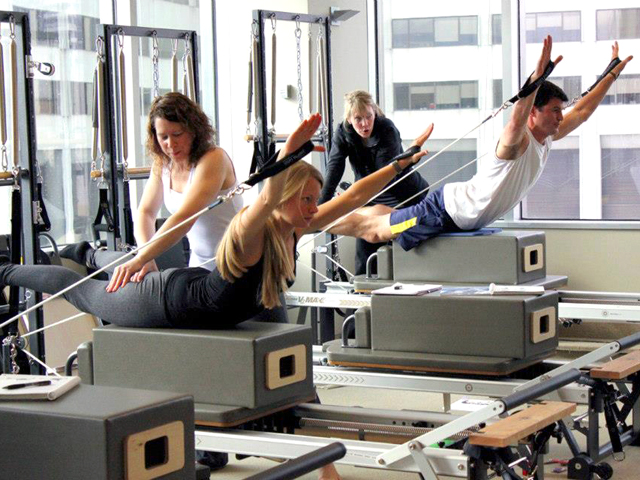Orsolya Nagyistok, Personal Trainer at Aspria, explains what the Pilates Reformer is and its fitness benefits.
Most people haven’t heard of Pilates machines and those who have seen one think it looks like some medieval torture rack! In reality, this couldn’t be further from the truth. The Reformer will ‘reform’ your life. When celebs say they “do Pilates” they usually mean they’re taking a class with this machine.
Reformer is a machine constructed by Joseph Pilates. It’s like a sliding bed attached to springs to provide resistance. This adjustable resistance helps you to ‘re-form’ muscular imbalances and tone, strengthen and lengthen the body for a great all over workout.
Using the machine provides increased tone for the arms and legs compared with mat work. The Reformer works to lengthen and strengthen the muscles rather than building bulk. It provides support for the lower back and is perfect for an effective, non-impact stretching and toning programme that is safe for the joints and favoured by physiotherapists and osteopaths.
Pilates Reformer is particularly suitable:
– If you find mat work too slow and not challenging enough.
– For helping to recover from knee and ankle injuries.
– For toning your legs and arms.
– For providing effective rehabilitation from spinal injuries (including hernia).
– For helping those with weak abs to start a programme and eliminate pain.
The Pilates Reformer was not intended to be used alone. The approach is more to integrate mat work and the machine in a specific programme to meet an individual fitness or health goal.
Try reformer – you will love it!
Pilates is a physical fitness system developed in the early 20th century by German physical-culturist Joseph Pilates. It is practiced worldwide, and especially in western countries such as Canada, the United States and the United Kingdom.
Pilates’ system of exercises are intended to strengthen the human mind and body. He believed that mental and physical health were interrelated.







